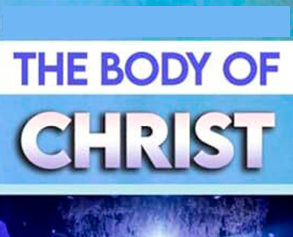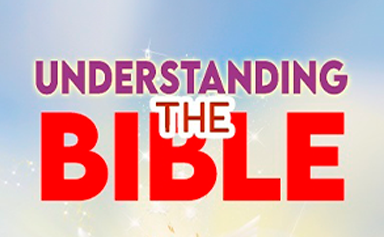
- Instructor: Admin
- Lectures: 5
- Quizzes: 5
Introduction:
This course aims to explore the doctrine of the Church (Ecclesiology) through the lens of Biblical Theology. We will trace the development of the Church from its origins in the Old Testament, through its manifestation in the New Testament, and into its ongoing significance in the present age. The course will integrate historical, theological, and practical reflections on the nature, mission, and future of the Church. This course will examine the theology of the Church (Ecclesiology) while integrating the Biblical narrative and theological structure throughout. The course will be divided into modules, each covering key aspects of the Church’s nature, function, and role, from a Biblical and theological perspective.
ECCLESIOLOGY_THE_DOCTRINE_OF_THE_CHURCH_COURSE_AND_QUIZ
Learning Objectives:
By the end of this course, students should be able to:
Understand the Biblical foundations of Ecclesiology from both the Old and New Testament perspectives.
Identify key theological concepts related to the Church’s nature, mission, and identity.
Analyze the role of the Church in redemptive history.
Examine the relationship between the Church and the Kingdom of God.
Reflect on the practical implications of Ecclesiology for contemporary Christian life and practice.
– Definition of Ecclesiology: Study of the Church, its nature, and purpose.
– Biblical Theology Overview: Understanding how the Bible unfolds its message over time.
– Relation between Ecclesiology and Biblical Theology: The Church in light of the Biblical story.
– Goals and Structure of the Course: How this course integrates Biblical Theology with Ecclesiology.
The Church in the Old Testament
– God’s People in the Old Covenant: Israel as the precursor to the Church.
– The Role of Israel: Election, covenant, worship, and mission.
– Types and Shadows: Understanding the Church in terms of Old Testament types (e.g., the Tabernacle, Temple, etc.).
– Prophetic Expectations of the Church: How the prophets look forward to a new covenant community (e.g., Isaiah 2, Ezekiel 36-37).
The Church in the Gospels
– Jesus and the Kingdom of God: How Jesus’ ministry defines the Church.
– The Founding of the Church: The significance of Peter’s confession (Matthew 16:13-20) and the commission to the apostles (Matthew 28:16-20).
– The Ecclesial Community in the Gospels: The Church as the people of the Kingdom.
– Jesus’ Teachings on the Church: The Church as a body, the Bride of Christ, and its role in salvation (e.g., John 13-17).
The Church in Acts
– The Birth of the Church: The Day of Pentecost (Acts 2).
– The Early Church and the Apostolic Ministry: The apostles as the foundational leaders of the Church.
– The Mission of the Church: Evangelism and spreading the Kingdom of God (Acts 1:8).
– Ecclesiology in Action: Community life in the early Church (Acts 2:42-47; Acts 4:32-35).
Pauline Ecclesiology
– The Church as the Body of Christ: Key passages in 1 Corinthians 12, Romans 12, Ephesians 1.
– Unity and Diversity in the Church: The theological basis for church unity (Ephesians 4:1-16).
– The Church and the New Covenant: How Paul understands the Church as the fulfillment of Old Testament promises (2 Corinthians 3).
– The Role of Church Leaders: Apostles, elders, and deacons in Pauline theology (1 Timothy, Titus).
The Church in the General Epistles
– The Church as the People of God: 1 Peter and Hebrews.
– The Role of the Church in Sanctification: How the Church supports its members in the process of becoming holy (Hebrews 10:24-25).
– Warnings and Exhortations: The call to preserve unity and faithfulness (Jude, James).
– The Church’s Holiness: Understanding the Church as a community that reflects God’s holiness (1 Peter 1).
The Church in Revelation
– The Church in the Apocalypse: Revelation 1-3 and the seven letters to the churches.
– The Eschatological Vision of the Church: The Church as the Bride of Christ, the New Jerusalem (Revelation 21-22).
– The Triumph of the Church: The victory of the Church in the new heaven and new earth.
The Nature and Mission of the Church
– The Church’s Identity: Understanding the Church as the body of Christ, the Bride, and the Temple of the Holy Spirit.
– The Mission of the Church: The Great Commission and the Church’s global mission.
– The Church as the Kingdom of God: How the Church reflects and participates in the Kingdom of God (Luke 17:20-21).
– Ecclesiology and Social Justice: The Church’s responsibility in the world.
Church Discipline, Unity, and Practice
– Church Discipline: Biblical principles for maintaining holiness and unity within the Church (Matthew 18:15-20).
– Unity in Diversity: How the Church can be unified despite differences (1 Corinthians 12-14).
– Worship and Sacraments: The role of baptism and the Lord’s Supper in the life of the Church (1 Corinthians 11, Matthew 28).
– The Role of the Holy Spirit in the Church: The empowering presence of the Holy Spirit in the life and mission of the Church.
The Church in History
– The Early Church and Patristic Period: The development of Ecclesiological thought in the early Church.
– Medieval and Reformation Ecclesiology: How ecclesiology evolved during the medieval and Reformation periods.
– Modern Ecclesiology: Ecclesiology in contemporary theology and practice.
The Church and the End Times
– The Church and Eschatology: The Church’s role in the last days (Matthew 24, 1 Thessalonians 4-5).
– The Final Consummation: The Church’s ultimate destiny in the new heavens and new earth (Revelation 21-22).
– The Role of the Church in Awaiting Christ’s Return: How the Church lives in anticipation of the Second Coming.
Assessment and Activities
Weekly Reading Assignments: Each module will require students to read selected biblical texts and theological works.
Reflection Papers: Short essays where students reflect on specific theological themes discussed in class.
Group Discussions: Online or in-person discussions on the nature and mission of the Church.
Final Paper: A theological paper that integrates Biblical theology and ecclesiology to present a comprehensive understanding of the Church.
Recommended Reading
“THE BODY OF CHRIST” by DR. ABRAHAM PETERS
“The Church: The Body of Christ in the World” by Donald G. Bloesch
“Ecclesiology: The Church as Communion and Mission” by Edward J. Kilmartin
“The Church: A Biblical Theology” by John D. Woodbridge
The Holy Bible (especially the Gospels, Acts, Paul’s letters, Revelation)
Curriculum
- 1 Section
- 5 Lessons
- Lifetime
- Modules10
- 1.1Definition and Nature of the Church
- 1.2Definition and Nature of the Church5 Questions
- 1.3Purpose and Descriptions of the Church
- 1.4Purpose and Descriptions of the Church5 Questions
- 1.5The Church and Civil Government
- 1.6The Church and Civil Government5 Questions
- 1.7The Local Church
- 1.8The Local Church5 Questions
- 1.9The Universal Church
- 1.10The Universal Church5 Questions





